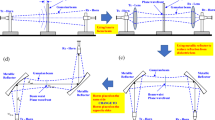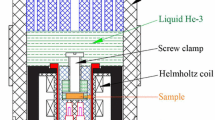Abstract
Low-loss dielectrics are important technologically as insulators but there is little understanding of the physical causes of this property and even their spectral response is not well documented—this study has revealed a number of different types of behaviour which do not appear to have been recognised previously. Most low-loss materials show a “flat”, nearly frequency-independent loss, but while some follow the “universal” fractional power law of frequency dependence which is widely applicable to more lossy materials, some are very different and require a fresh approach to their interpretation. It is pointed out that low-loss behaviour is not necessarily connected with the absence of impurity dipoles and the recently introduced concept of dipolar screening may explain low-loss behaviour in impure materials. The universal response is shown to be only one of several forms of dielectric behaviour and examples are given of possible alternative forms which may explain the apparent incompatibility of some experimental data with Kramers-Kronig relations.
Similar content being viewed by others
References
A. K.Jonscher, “Dielectric Relaxation in Solids” (Chelsea Dielectrics Press, London, 1996).
A. K.Jonscher, “Universal Relaxation Law” (Chelsea Dielectrics Press, London, 1996).
Junie Wu D. S.Mclachlan,Phys. Rev. B 56(1997) 1236–1248.
J.Menegotto, private communication.
D. S.Mclachlan, private communication.
Aishah Isnin A. K.Jonscher,Ferroelectrics 210 (1998) 47–65.
A. K.Jonscher, C.L´eon J.Santamaria,J.Mater. Sci.33(18) (1998).
R. S.Lim, A. V.Vaysleyb A. S.Nowick,Appl. Phys. A56(1993) 8–14.
A. K.Jonscher Aishah Isnin,Ferroelectrics 210 (1998) 67–81.
L. A.Dissado R. M.Hill,Proc. Roy. Soc. Lond. A390 (1983) 131–180.
G. A.Niklasson,J. Appl. Phys.62(1987) R1-R14.
R. M.Hill, L. A.Dissado R. R.Nigmatullin,J. Phys. C: Condensed Matter 3(1991) 9773–9790.
R. R.Nigmatullin,Physica Status Solidi (b)133(1986) 425–430.
J. C.Dyre,J. Appl. Phys. 64(1988) 2456–24668.
Idem.,J. Non-Cryst. Solids 135 (1991) 219–226.
K. L.Ngai, ibid.203 (1996) 232–245.
M. P. JVan Staveren, H. B.Brom L. J. DEJongh, Physics Reports208(1991) 1–9.
A.Hunt,Journal of Physics-Condensed Matter 2(1990) 9055–9063.
K.Weron,J. Phys: Condensed Matter 3(1991) 221–223.
Idem., ibid.3(1991) 9151–9162.
K.Weron A.Jurlewicz,J. Phys. A: Math. Gen. 26 (1993) 395–410.
H. J.Queisser,Appl. Phys. A52(1991) 261–264.
S.Bozdemir,Phys. Status Solid (b)103 (1981) 459–470.
Idem., ibid.104(1981) 37–47.
A. K.Jonscher,J. Mater. Sci.32(1997) 6409–6414.
Idem.,Appl. Phys. A 56(1993) 405–408.
S.Havriliak Jr., private communication.
Author information
Authors and Affiliations
Rights and permissions
About this article
Cite this article
Jonscher, A.K. Low-loss dielectrics. Journal of Materials Science 34, 3071–3082 (1999). https://doi.org/10.1023/A:1004640730525
Issue Date:
DOI: https://doi.org/10.1023/A:1004640730525




